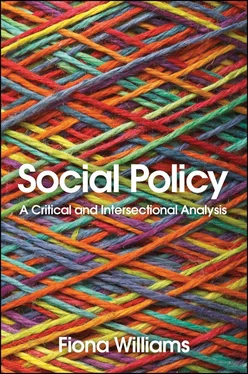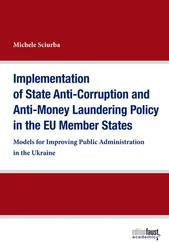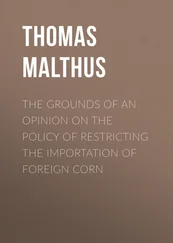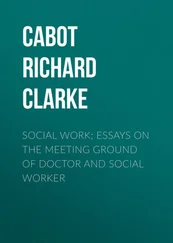In terms of variety over time, in the UK there were two further waves after the New Right. From 1997 to 2010, a New Labour centre-left version of neoliberal welfare combined social investment and anti-poverty programmes with continuing forms of privatization, deregulation and marketization in public services and with labour market activation and self-responsibilization of welfare citizen-consumers. The third wave came after the North Atlantic Financial Crisis, with a long period of neoliberal austerity welfare embedded by the Conservative–Liberal Democrat Coalition and Conservative governments from 2010, punctuated by the Brexit referendum in 2016 and the re-election of a Conservative majority government in 2019. This imposed fiscal austerity, leading to cuts in public expenditure focused on welfare benefits, housing support and social services (especially social care) and hit the poorest 20 per cent hardest. The undermining of the welfare state was profound (Taylor-Gooby 2013; Hills 2017; Farnsworth and Irving 2015; Bennett 2019). Local authority spending was severely cut, as were spending programmes for schools and prisons, with public-sector pay rises held back. While health care was relatively protected, ‘efficiencies’ in the system meant that services were not able to keep up with demand. The proportionate tax burden was moved towards lower income groups, away from the wealthy and corporations (Ruane and Byrne 2014). By 2017, child and pensioner poverty started to go up for the first time for twenty years (JRF 2017). It remains to be seen at the time of writing how far the Covid-19 pandemic will produce a new wave that either breaks the mould or reinforces it (see chapter 4).
Again, the UK has not been the only country to introduce some form of austerity welfare in response to the financial crisis, although these too differ across the varieties of neoliberalism mentioned above (Jessop 2015; Olafsson et al. 2019). The global financial crisis was uneven in its impact, starting in the US and the UK as a ‘North Atlantic Financial Crisis’ before affecting Western Europe, but having less effect elsewhere such as Australia. It is also the case that, within Europe, austerity policies have not always emerged as a national response: in the case of Southern Europe – Spain, Portugal, Italy and Greece – they were imposed by the EU, European Central Bank and IMF, with deleterious consequences to poverty and inequality in those countries (Béland and Mahon 2016: 88–9).
In explaining this third shift to austerity welfare, many social policy analysts of the UK have noted its force as an economic tool in restoring capital’s power after the financial crisis and as an ideological tool in seeking to transform not only the relationship between the economy, the state and the individual but the very social relations of everyday life (Tyler 2013; Jensen 2018). John Hills’s careful assessment of the first four years of austerity was that its realization in the face of its human damage depended on a ‘welfare myth’ of ‘them and us’ – hard-working taxpayers versus welfare-dependent scroungers (Hills 2017; see also Blythe 2013; and the UN’s special report on Extreme Poverty and Human Rights in the UK, UN 2019).
Richard Seymour’s study analyses austerity measures in the UK and the US as articulating an economic, political and ideological response to the financial crisis involving the following processes:
drastic and long-term ‘rebalancing’ of economies away from wages and toward profits;
growth in the power of financial capital with the accompanying spread of precarity in all areas of life as a disciplinary strategy;
the recomposition of social classes, with more inequality and more intra-class stratification;
the takeover of state institutions by corporations;
the shift from welfare benefits as collective provision to coercive workfare, sanction and penalties;
a cultural economy that values hierarchy, competitiveness and contempt for the vulnerable. (Seymour 2014: 3–4, paraphrased)
My framing of these issues seeks to explore the social and cultural dynamics further in their relation to the economic, ideological and political and how legitimacy for such impoverishing political strategies was sought. Austerity welfare in the UK has reproduced differential disadvantages and advantages while constituting multiple intersections of social exclusion, discrimination and hierarchy, marked by class, gender, disability, race, ethnicity, religion, migrant status, nationality, place and generation. The pro-Brexit campaign in 2016 attempted to coalesce these into a series of cross-cutting binaries (Remain/Leave; us/them; native/migrant; ‘white’ working class/cosmopolitan elite). As well as, and among, families and youth in deindustrialized regions, it is women, especially lone parents and women of colour, disabled women and men, racialized minorities, and migrant women and men who have been particularly affected by austerity (WBG and Runnymede Trust 2017; Bassel and Emejulu 2018; Scullion 2018; WelCond 2018; Ryan 2019; Morris 2019; Shutes 2017; Edmiston forthcoming). These developments require an analysis at both the global and the national scale that can deal with ‘the social’ – the complex interconnections, contradictions and contested social relations in social welfare (whether this is austerity welfare or other more moderate neoliberal social policies such as those in the Nordic countries). But this needs to be contextualized, and, while most social policy analyses locate the global in terms of the financial crisis, I argue that we can better understand what is happening to nation welfare states if we have a more complex appreciation of the intersecting crises of a contemporary financial capitalism that were born into and out of different forms of imperial, colonial, postcolonial, patriarchal and planetary exploitation, expropriation and expulsion. I start with these – the four interconnected global crises of capitalism: financial, social reproductive, ecological, and the racialized bordering of transnational mobility.
Frame 1: Intersecting global crises
‘Crisis’ – a note
Crisis carries several meanings. It can refer to an existing tension that threatens the status quo. Central to a Marxist understanding is that capitalism sows the seeds of its own destruction in that its profits depend upon intensifying exploitation of its labour force, leaving it vulnerable to their inability or refusal to be further exploited (Marx and Engels 1886). More commonly, crisis can refer to a short-lived acute predicament that leads to a turning point; or it may be an enduring chronic critical condition that awaits action. In this sense, Gramsci referred to a crisis being an interregnum when ‘the old is dying and the new cannot be born’, in which ‘a great variety of morbid symptoms appear’ (Gramsci 1971: 276). In other words, there is a recognition that the existing order does not work, yet there are not sufficient oppositional ideologies and forces (a counter-hegemony) to reconstruct it, and it gets worse. As important is the need to ensure that the claim to a global crisis needs to clarify for whom there is a crisis, and whether all regions of the world experience the crisis similarly.
These meanings and questions cover all four crises I discuss – of financial capitalism, of care and social reproduction, of environment, and of racialized transnational mobilities – in different ways. What they share is that they have emerged from an enduring tension inherent in their relationship with capitalism as an economic system of production and consumption into the specifics of a racial, extractivist and patriarchal neoliberalism. This has reached a critical point where, singly and together, they endanger future eco-social, human and non-human wellbeing and future sustainability. They are also areas of significant international mobilization and struggle which potentially challenge the hegemony of neoliberalism (discussed in chapter 7). For now, my main point is that it is in this conjuncture of intersecting crises that we better understand the shaping of national and supranational social policies.
Читать дальше












